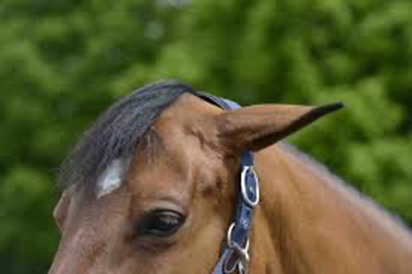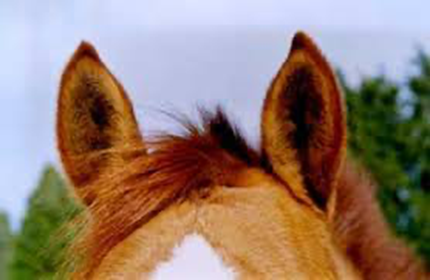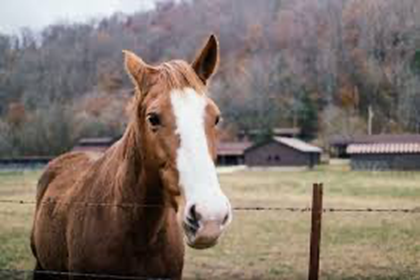Equine restraint, PE, and behavior
1/30
There's no tags or description
Looks like no tags are added yet.
Name | Mastery | Learn | Test | Matching | Spaced |
|---|
No study sessions yet.
31 Terms
How should you approach a horse?
From the near or the left side, near the shoulder. Stay at least 10 to 12 feet when approaching a horse.
What is the kicking range of a horse?
Up to 8 feet
How do your properly catch a horse?
Slip the lead rope around the horses neck and tie a single overhand knot.
How do you place a halter?
Hold the neck strap in your left hand, reach under the horses neck and hold the head still and bring the halter over the horses neck.
What are stocks used for, and what are the 3 types?
They are used to restrain horses for grooming and other procedures. The 3 different types are portable, standard, and custom stocks.
What is a skin and ear twitch?
A physical restraint used that can be stressful and damaging.

When a horse has it ears back this means?
It is angry or aggressive and may be planning to bite or attack.

When a horse has its ears forward this means?
The horse is attentive and listening.

When a horse has its ears tipped forward and stiff, as well as flaring nostrils this means?
It is scared or interested in something.
When a horse is pawing at the ground this means?
They are bored, stressed, or waiting for food.
When a horse has one front leg lifted this means?
Can be a mild treat or a stance while eating.
When a horse has one of its back legs lifted this means?
A defensive treat
When a horse is stamping this means?
Indicates a mild treat or a protest, or they may be getting rid of insects and bugs on their legs.
What does a swatting tail mean?
Can indicate annoyance or agitation.
What does a tugged tail mean?
Suggest fear or submission
What does a raised tail mean?
Suggests excitement or alertness
What does rapid swishing tail mean?
A sign of anger and frustration and a precursor to bucking or kicking.
What are equine vices?
Repetitive behaviors
What can cause vices in horses?
Can be caused by a lack of social contact, turnout, or foraging opportunities.
What is cribbing?
Cribbing is a repetitive behavior where the horse places its upper teeth against a flat surface, arches its neck, and pulls backward with its body while grunting.
What does cribbing cause?
Increase in stomach acidity, decrease saliva production, slower digestive passage, and increase of stomach ulcers occurring.
What is weaving?
Weaving is a side-to-side movement of the horse's neck and weight, which sometimes occurs with lifting and lowering of the feet.
What are some effects of pawing?
Can damage hooves, loosen shoes, compulsive disorders, and a harder time training.
What is the most common tranquilizer used in horses?
Acetylpromazine
What is the most common sedative/hypnotic used in horses?
Xylazine and detomidine
What are the basic parts of a physical exam?
Temp, HR, RR, body systems
What is a normal HR for a horse?
32-40 BPM
What is a normal RR for a horse?
12-40 BPM
What is the normal Temp for a horse?
99-101.5 F
What are peripheral pulses?
Strong, synchronous with the heart.
What do red spots of the MM mean?
Serious infection